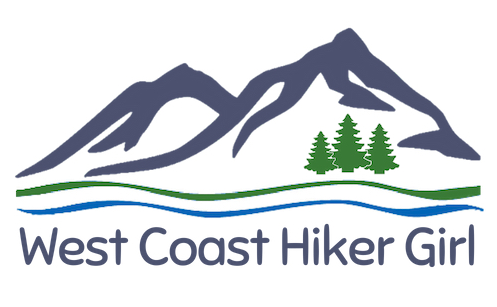16 days until trail!
We’re getting down to the wire, which means down to the nitty-gritty bits of preparation. My biggest focus these past couple weeks has been on our resupply package.
This is my first long trail, which means my first time using a resupply system. A few months back, as we were figuring out our itinerary, we made the decision of how best to resupply ourselves. Being Canadian, we’re struggling with the problem of our dollar being rather low. For each US dollar, we have to pay an extra 30% in exchange. This makes any trip across the border 30% more expensive! With that in mind, we decided to

25 lb of food in our resupply box
start our hike with an entire week’s worth of food, to get us from our trailhead at Tioga Pass all the way to Vermillion Valley Resort. We will only be sending one resupply box to ourselves, which saves money both in shipping costs and in resupply pick-up fees.
There was the option of getting a resupply at Red’s Meadow, which we will pass on our fifth day. However, the next best resupply point after that is Muir Trail Ranch, which is an expensive resupply, without any extra amenities for hikers.
Vermillion Valley Resort won the draw thanks to their list of services offered to thru-hikers and their affordable resupply option. We’ve built in a zero day at VVR, which means we won’t do any hiking at all. Instead, we’ll have a comfortable (free!) campground to stay in, showers, laundry, hot food cooked by someone else, and lots of cold beer.
Beyond VVR, the resupply options get a lot more challenging. We were faced with paying a couple hundred dollars for a pack-train resupply, carrying 13 days of food or begging someone to hike in a resupply. Thankfully my father-in-law has come to our rescue! He’ll be hiking in over Kearsarge Pass to meet us near Charlotte Lake and bring us our last 4 days worth of food. That still means carrying 9 days of food from VVR, but it’s much better than 13!
I imagine you can tell by now just how much thought and planning has gone into our resupply, and this doesn’t even include the actual food!
Did I mention yet that we’re vegetarian? Officially we’re lacto-ovo-pesca-tarians, which means we don’t mind eating dairy, eggs or seafood (as long as it’s well sourced!) But there is absolutely nothing that will make me want to eat jerky!
So, how do you eat 3000 calories a day while keeping pack weight down, maintaining variety and a healthy diet? With lots of careful planning!
As you may have gathered from my previous posts, I have become a master of the dehydrator. Over the past couple months I have been dehydrating fruit, sauces, and full meals. To make life a little easier we also picked up a box of pre-dehydrated ingredients like veggies and beans, which I could then mix together with spices and carbs to make our meals.

A few of the oatmeal flavours we get to enjoy
Most of our breakfasts are oatmeal packages that we put together thanks to the awesome recipes featured onTheYummyLife. They are chock full of fibre, protein and flavour! Plus there are enough recipes that we only repeat any given flavour twice over the entire 21 days of our hike. Our breakfast bags include a mid-morning snack of a protein-rich granola bar.
Trail lunches are always a challenge for hikers. I’ve never been a fan of sandwiches so on our day hikes we’ve gotten into the habit of having a block of cheese, a couple rolls of bread, some nuts and an apple. Of course most of that is impossible to bring along on a backpacking trip, plus we need way more calories than that lunch offers.

One of Dan’s salmon
Thankfully last summer Dan went on a salmon fishing trip and brought back two beautiful Chinook salmon. We froze an entire fish for most of the year and then turned it into amazing salmon jerky. I marinated half of the fish in maple-soy sauce and the other half in lemon-pepper marinade. Dan also got some of his fish candied, which I was able to further dehydrate. Along with the salmon we’ll have crackers or tortillas, hummus and dehydrated fruit. Talk about a great trail lunch!
Backpacking dinners are our pièce de résistance. No Backpackers Pantry meals for us! I much prefer to draw from the amazing recipes found in “Lipsmackin’ Vegetarian Backpacking.” I’ve been using this cookbook for most of the years I’ve been backpacking and I have some real favourites, like “Boot-Stomped Spuds,” “South Sister Stroganoff,” and “TrailDad’s Spaghetti.” All of our dinners hit near the 1000 calorie mark, and include a heavy carb such as rice, potatoes and fry bread.
Dessert is an important indulgence for backpackers. I particularly love cooking up the “Fabulous Fry Brownies” or “Chocolate Chip Fry Cookies.” We’ve also made up packets of pudding with mix-ins like freeze-dried strawberries and crumbled chocolate cookies.

9 days of trail food for 2 people.
I know that there are many different ways thru-hikers plan their menus. Some hikers really don’t mind eating the same dehydrated meal day in and day out. Some hikers don’t even bother with a stove, and instead consume an endless amount of energy bars. We’ve chosen to rise to the challenge of having a variety of meals while maintaining the healthiest diet possible.
What’s your backpacking menu look like? Have you ever had to plan resupply boxes? What’s the heaviest amount of food you’ve had to carry at one time? Share in the comments below!


